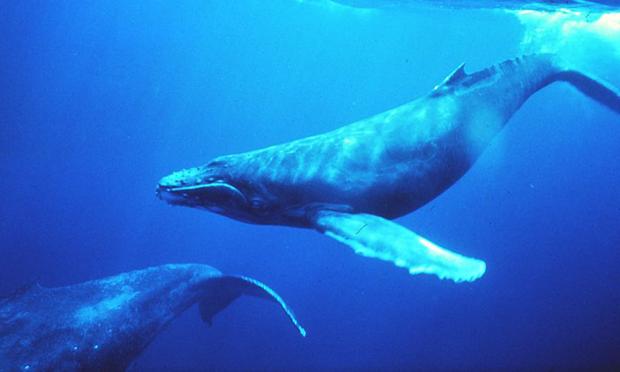
This blog has repeatedly advocated the rights of animals suffering in research laboratories, mainly rodents, dogs, cats etc. However it is no surprise that other walks of life are greatly affected by human interaction.
According to the Green Peace Organization, we will see other forms of testing that will greatly affect marine life as well as oceanic ecosystems in the near future. The ocean makes up about 70% of our planet and the wide range of biodiversity is the main source of revenue of many economies along the coast as well as for islander communities.
President Obama has permitted seismic testing and sonar testing by the United States Navy in hopes to find oil sources in places below sea level – where marine species live and prosper.

Seismic testing include airguns that are used to explore oil and gas deposits beneath the ocean floor. They give off deafening impulses on a recurring basis. Similar to echolocation, when the sound waves ‘bounce back’ these scientists are able to locate oil deposits. The noises generated from the airgun impacts fish, invertebrate, along with the endangered marine mammal population.

To make matters worse, the United States plans to search the ocean floor along the East and West coast of America. This will not only deplete already endangered species, but will also affect fisheries and overall economy. These impulses will cause harm and possibly kill animals in close proximity to the airgun. As for animals at great distances away, it will still be deafening and cause behavioral differences, such as changing their migration patterns for breeding and feeding.

Nevertheless, we all know that the oil industry and gas prices are a huge concern for this country that must be addressed. But what if there was an alternative to the seismic airgun testing?
According to Okeanos – Foundation for the Sea, out of Monterey, CA, USA there have been promising technologies for the near future that can produce the same quality effects of an airgun, without impacting marine life.
It has been found that “controlled sources, such as marine vibrators (e.g., hydraulic, electric, etc.)” can reduce the peak amplitudes, consequently reducing the frequencies of sound projected onto the ocean’s floor. This sweep (instead of an impulse) is accomplished by dispersing the energy at lower doses over time. Also, a technique known as pseudo noise (PN) sequences reduces the amplitude as well.
Both of these new alternatives do not decrease the quality of data. The worth is synonymous to the seismic airgun testing. They simply decrease the potential consequences. However it is clearly noted in Okeanos’ report that more research and funding must be included to fully understand the long term effects of these technologies.
If we invade ecosystems searching for oil without considering the consequences, future generations will be greatly affected. A project as controversial as this deserves further thought and examination of alternatives before drastic measures are taken and we are left with irreversible damage.

“The sea, the great unifier, is man’s only hope. Now, as never before, the old phrase has a literal meaning: we are all in the same boat.”
— Jacques Yves Cousteau, Oceanographer
References
- http://www.greenpeace.org/usa/oceans/save-the-whales/seismic-sonar-testing/
- http://www.okeanos-foundation.org/assets/Uploads/Airgun.pdf
- http://www.seasky.org/quotes/sea-quotes-ocean-conservation.html
- http://img.nauticexpo.com/images_ne/photo-g/air-gun-seismic-survey-40158-7052639.jpg
- https://upload.wikimedia.org/wikipedia/commons/1/1d/Airgun-array_hg.png
- http://wwwgreeneridealcom.c.presscdn.com/wp-content/uploads/2012/10/Oceana_Seismic_Airgun_Testing_Infographic-2.jpg
- https://media2.wnyc.org/i/620/372/c/80/photologue/images/37/humpback.jpeg
- http://www.dumpaday.com/wp-content/uploads/2012/12/sea-turtles-ocean-pictures.jpg
Hello Sam,
I really liked your pictures in your blog because it really caught my attention! It makes me sad that there are things going on that will hurt our marine animals living in the ocean. I almost feel like this is never ending, I almost wonder now if this is ever going to end one day. Animals have lives to life, to reproduce and mate just like how we do as humans. It is seriously unfair that these animals are being harmed. I’m glad there will be airguns that will make it less harmful for the marine animals. It is scary to imagine if this is always going to be happening and animals cannot be saved as you said, “irreversible damage.” I really liked your blog Sam and I thought this was very interesting to read about!
LikeLike
Your blog is very interesting and a sad at the same time. It really hurt to know that we’re doing that much harm to other creatures just to make our life easier, not even to survive! But it’s great that there is hope to make things right, maybe a little bit, but it’s a step in the right direction. Thanks for such a nice blog!
LikeLike
You brought to our attention some the most important, yet forgotten aspect of animal caring. Most sea creatures we do not really know about, thus, we do not care that much. The damages that we cause can’t be seen by everyone. Therefore, people do not feel the danger that we put on the eco system. We have to regulate those procedures more and care about life under sea more. Great article Sam!
LikeLike